COVID-19 and Beyond: Nature-Based Physical Activities for Physical and Health Education
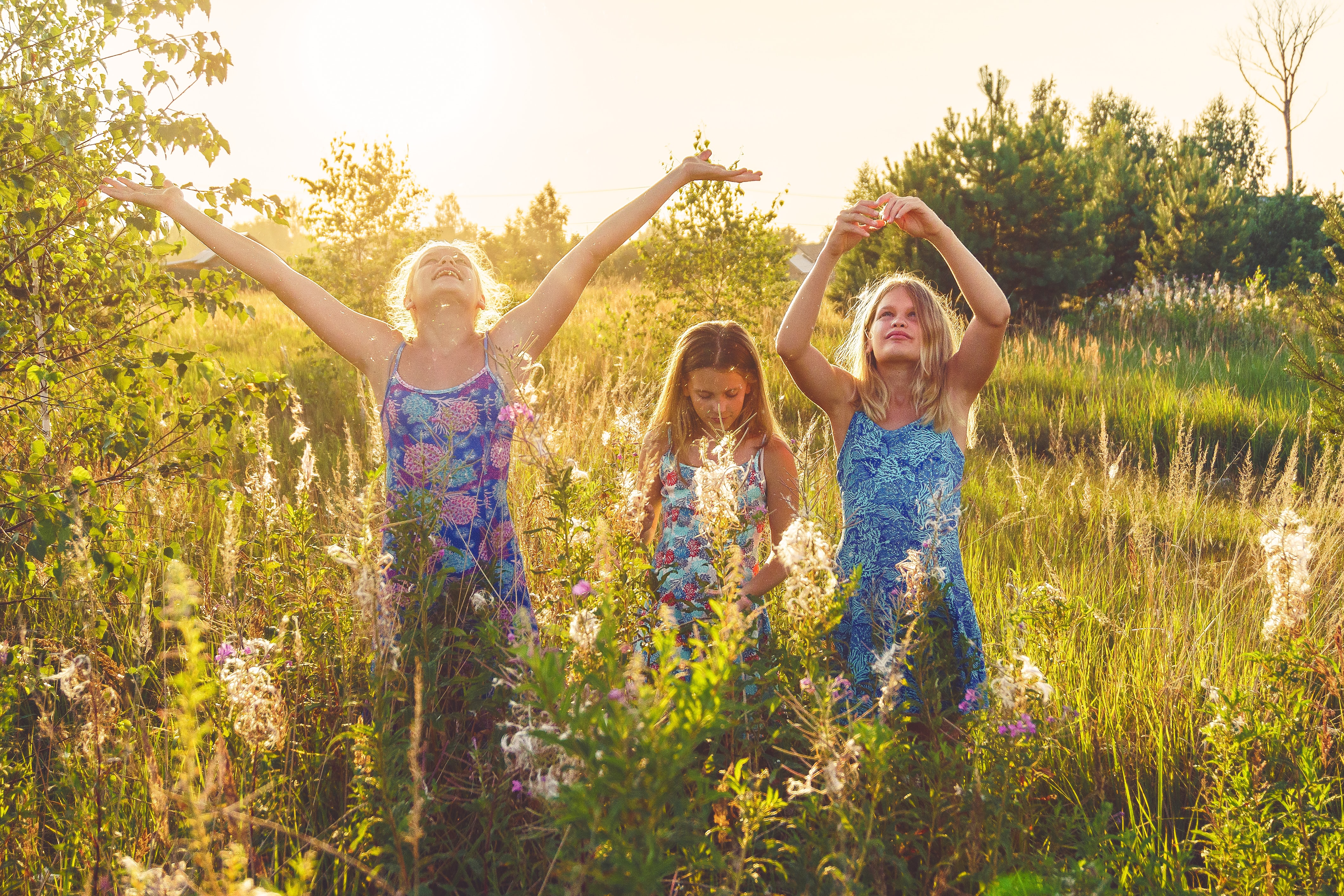
Previously published in Volume 87, Issue 3
Abstract
The global pandemic, COVID-19, impacted, and continues to impact, many aspects of life, including learning and teaching in Physical and Health Education (PHE). Whereas some teachers struggled to engage students while following provincial regulations, other PHE teachers found creative solutions for providing meaningful PHE experiences for their students. These experiences not only encouraged students to be active, but also to connect to others and interact with nature. This article describes three specific nature-based physical activity (NBPA) examples teachers involved in a schools-university partnership used to actively engage students in their own learning in PHE. These activities were a safe and meaningful way to get students active in nature during the pandemic, but they also have relevance beyond COVID-19.
Introduction
As with almost all aspects of our lives, the restrictions brought on by the COVID-19 global pandemic forced teaching and learning in Physical and Health Education (PHE) to change quickly and dramatically. Almost overnight, PHE went from students and teachers interacting in gymnasiums, to students and teachers learning how to be active outside and physically distanced. During COVID-19, many structured sports and activities, more typical to PHE, were not possible to implement. Since, as we know, physical activity is key to managing mental and physical health and well-being, especially during a pandemic, it was really important, as PHE teachers, to encourage our students to be active.
The purpose of this article is to share three nature-based physical activities (NBPAs) created and implemented by teachers involved in a schools-university partnership to get and keep their secondary students learning and engaged in PHE when restrictions forced lessons to be implemented physically distanced and, for many schools, outside of the school building. Nature-based physical activities are those activities done in natural areas, require little specialized equipment, deemphasize competition, are cost-efficient, and can be implemented by teachers on a regular basis (Gruno & Gibbons, 2020, 2021). Although some of these activities manifested in the teachers’ programs due to the pandemic, all of them have relevance and value to a post-pandemic PHE curriculum.
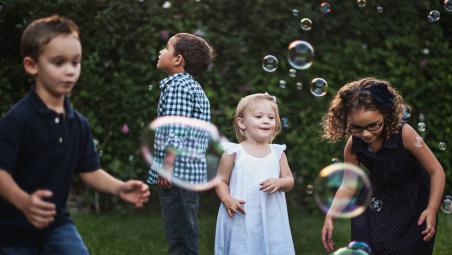
Nature-Based Physical Activities
During the extraordinary circumstances of COVID-19 which included, and continue to include, social distancing, nature offered resilience for maintaining well-being (Samuelsson et al., 2020). In the circumstances of social distancing when people were still allowed to visit outdoor environments, natural areas provided people with opportunities to escape household confinement and enjoy a host of positive well-being effects (Hartig et al., 2014; Markevych et al., 2017), maintain social relationships even with recommended distance (Jennings & Bamkole, 2019), and provide a sense of connection with the outside world (Weimann et al., 2019). Similarly, once students returned to schools, access to indoor facilities was limited and many teachers turned to nature. PHE Canada recommended in their COVID-19 Pandemic: Return to School Guidelines to “include more individual pursuits than traditional team activities such as…alternative environment and land-based activities…[and] mindfulness” and to “explore local parks and green spaces to promote outdoor learning and activity” (Davis & Long, 2020, p. 11). Specifically, PHE Canada recommended activities like outdoor treasure hunts, survival skills, hiking, orienteering, geocaching, and outdoor education. Beyond the circumstances of COVID-19, many in the public health and physical activity research field have called for change to the dominant, traditional, team sport oriented PHE curriculum (Fairclough & Stratton, 2005; McCaughtry et al., 2008; Trost, 2006) and a move towards more lifetime activities. Nature serves as an avenue for lifetime physical activity: those activities that people continue to participate in throughout life because they can be done individually or with others and require little organization and minimal equipment (Fairclough et al., 2002).
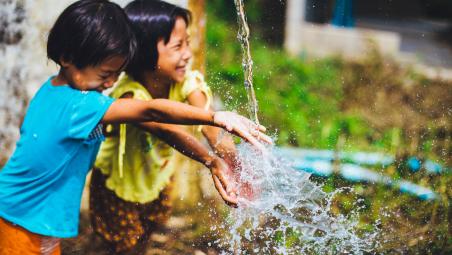
Nature-based physical activity in PHE has the potential to create an enjoyable experience during which students learn generalizable movement skills that will transfer into diverse activities, sports, and games offered at school, in the community, and later in life (McKenzie & Lounsbery, 2009; McKenzie & Lounsbery, 2014). Nature-based physical activity can influence the promotion of physical activity by redesigning the PHE curricula to promote out-of-class physical activity, modify the school environment so students have opportunities to be active on campus outside of PHE lessons, and work to develop physical activity linkages in the community (McKenzie & Lounsbery, 2014).
COVID-19 was an impetus for many PHE teachers to develop and refine NBPAs for their students. Now that many of the restrictions across the country have been lifted, we hope that many of these activities will remain in PHE curricula. We present in this paper three NBPAs that teachers, as part of a schools-university partnership, created and utilized with their students during COVID-19. They shared these activities with the other members of the partnership in a virtual meeting, and it is the goal of many to implement these activities in their PHE programs even when instruction is ‘back to normal’.

Schools-University Partnership
The activities presented in this article were all contributed by members of a schools-university partnership. This sort of partnership helps to facilitate the professional development of teachers, and provides the conditions that support and promote collaboration and professional growth (Clarke & Hollingsworth, 2002). A schools-university partnership has been defined as a relationship of collaboration between a group of teachers and university researchers, which leads to the creation of practice-based research and knowledge (Baumfield & Butterworth, 2007; McLaughlin & Black-Hawkins, 2004). Some basic conditions have been established in the literature as key to developing a successful partnership, such as obtaining mutual benefits, common interests, collaborative action and reciprocity (McLaughlin & Black-Hawkins, 2004).
In 2007, the second author formed a group of teachers, including the first author, from throughout British Columbia in order to conduct formative and participatory-action research, as well as provide the teachers with current, research-informed, professional development opportunities. The second author reached out to past students as she had been a PHE teacher-educator for a number of years. The formation of this group was grounded in a commitment to the mutually beneficial relationship between researchers and teachers when it comes to making curricular and/or instructional change.
In 2018, to the present day, the focus of the partnership has been on implementing NBPA in PHE (Gibbons et al., 2020; Gruno & Gibbons, 2021). Despite spanning 14 years, many of the research group’s members have remained the same, and new teachers are welcomed each year. Usually, the format for the all-day annual meetings, held every November, focus on the research agenda in the morning (focus groups, project sharing etc.), then lunch is provided (with time to chat and network), and then the afternoon is dedicated to an active professional development workshop; the topic is usually identified by the teachers. However, due to COVID-19, our last meeting was held virtually through Zoom in May 2021. Consistent within this group is the idea of “shared leadership for learning” (McLaughlin & Black-Hawkins, 2004, p. 267) where the agenda is co-created between teachers and researchers. The agenda for the virtual meeting was created by the teachers themselves through responses to a Google Forms survey where they determined the topics of interest. The most popular choice, by far, was “COVID-Friendly Activities,” and we quickly found, by their very nature, that these activities took the form of NBPA.
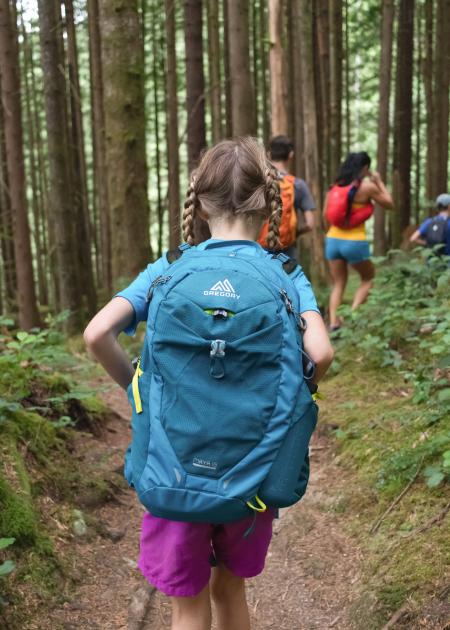
COVID and Beyond Activities
During the COVID-19 pandemic, public health officials consistently recommended engagement in physical activity as crucial to managing both physical and mental well-being during the pandemic (Lesser & Nienhuis, 2020). However, coupled with this recommendation were the limitations imposed by restrictions designed to minimize the spread of COVID-19 (e.g., physical distancing, closure of school gyms and recreation facilities). These restrictions took away many of the traditional outlets for students to be physically active both within and outside of school. However, natural areas on and near school campuses were still accessible. This created an opportunity for students to explore perhaps underutilized physical activity venues in their school and community.
The following three activities can be modified for most middle and high school PHE programs. They require little travel and can even be taught in green spaces on school grounds. An added bonus would be to include the lifetime activity of walking to a nearby natural area. The activities require various levels of trust in students; for example, two of the activities require students to be spread out in a natural area, which means some may be out of direct eyesight of the teacher for a few moments if in a heavily treed forest. Ensure that students are clear about the boundaries and have a return-to-start signal (e.g., three whistle blows). These activities include the essential characteristics of NBPA mentioned earlier. The teachers selected these activities because they require little equipment, foster a connection with nature, are easy to implement, and were favourites among their students.
Geocaching
Group size: 2+
Equipment: Student cell phones
Activity directions:
- Have students download the free Geocaching app on their phone
- Optional: Show a short video on the Geocaching website as an introduction: https://www.geocaching.com/play
- The app is free and will show different geocaches in the area for students to find. They will appear green on the map.
- Once your class has decided on one to find, head out to discover the geocache.
- There are hints and clues on the app to help with finding them. You can look up reviews and when the last time someone has found the geocache. The app does not require data to use once you have downloaded the map.
Teacher insight:
This activity was shared by Stephanie Torbohm from Royal Bay Secondary School, Colwood, BC. She stated the following about Geocaching with her students:
Geocaching was a great way for students to be outside and try an activity that was new to them. Most students have a phone on them and since the app is free, each student was able to download the app and track the geocache themselves. The students really enjoyed ones that were hidden in the forest; they liked how it was similar to a scavenger hunt and how there was a box with items for them to find. I even had some students say they tried some on the weekend with their families since they can look at the map and find geocaches in their area.
Camouflage
Group size: 8+
Equipment: None
Activity directions:
- Choose one student to be the “chaser” and stand in the centre of the playing space. They slowly count to 20 while the rest of the class hides.
- The “chaser” student can then look to see if they can see any of their classmates. If so, they call them by name and the found student comes in and sits down (near the student who is the chaser). They can call a classmate out at any time until everyone has been seen.
- The student who is the chaser also has the choice to call the following:
- "Food and Water for ___": we start at 10 and then decrease by 1 each round. The rest of the students come in and tag something or someone near the chaser before they go back and re-hide.
- "Forest Fire for 5-10": hiding students then need to change places.
- "Sounds like a _____": for example, a dog. The hiding students then all need to make dog noises.
- "Fingers": The ‘chaser’ student holds up their fingers to show a number 1-5. The hiding students must look out and see their hand and call out the number. The game keeps going until everyone is caught. I usually have the last person who is caught be “chaser” the next round.
Teacher insight:
Kirsten Dibblee, from Parkland Secondary, Victoria, BC, shared Camouflage at the schools-university partnership meeting. She stated, “Last quarter, the favourite activity of my PHE class was to go into the campground beside the school and play Camouflage. (I enjoyed it too!). It works well there, but it can be adapted to any forest or any place where students can hide.” As far as why it is a favourite activity, she explained: “…it is so easy to participate fully! It is one of those games that everyone can play well and has an even playing field for everyone in the class. I also think we all like it because it can be hilarious watching people trying to hide and/or run in and out to tag the bench…I personally also like it as it is a simple way to extend our time outside if we are fast coming back from a walk or a hike as you can play it almost anywhere there are enough hiding places and it takes no preparation or equipment.”
Marker Tag
Group size: 10+
Equipment: Approximately 8 markers of all different colors, a stack of sticky notes, a list of words (6-8 letters long) – your class size will depend on how big your word is… I use an 8-letter word for 50 students.
Activity directions:
- Give each student a sticky note (can use hands if you don’t have sticky notes)
- Give 5-8 students a marker (depending on the size of your class), these students go hide in the woods, wherever your boundaries are, and must stay in one place.
- These students are each given a letter (that will make a word) to write on the sticky note when the other students find them.
- The sticky note students try to find all the marker people who will give them a letter. Once they have all the letters they will come back to the teacher. The letters will be scrambled, and they must figure out the word that you gave out to the markers.
- Game is over when a student guesses the word.
Teacher insight:
When Jina Taylor, from Cumberland Community School, Cumberland, BC, presented this activity at the schools-university partnership meeting, it became an instant favourite among the group. She states, “I love that everyone can go at their own pace to find the hiders. It is a hide and seek game, so the students are fully engaged right from the get-go. The word can change from group to group so it can be played at any grade level. The kids absolutely love this game, and it is an easy game to get 100 percent participation by the whole class.”
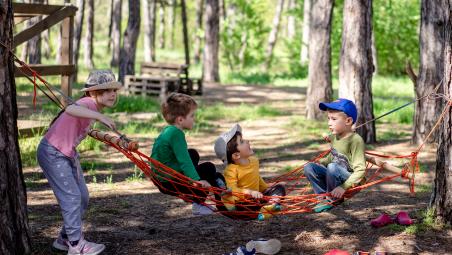
Summary and the Future
In the words of Dr. Bonnie Henry, British Columbia’s provincial health officer, "Please, go outside” (CBC News, 2020). Despite the fact that the pandemic has been devastating to society, many dedicated teachers have found alternative teaching strategies in order to keep their students safe and engaged in their learning. This article presented three specific activities that teachers, as part of a schools-university partnership, used during COVID-19 to keep students moving and motivated outside in PHE. Whereas these activities came about as a result of adapting to COVID-19 restrictions, they have become favourites of students and teachers alike, and will continue to be used even once the restrictions are lifted.
References
Baumfield, V., & Butterworth, M. (2007). Creating and translating knowledge about teaching and learning in collaborative school-university research partnerships: An analysis of what is exchanged across the partnerships, by whom and how. Teachers and Teaching: Theory and Practice, 13(4), 411–427. https://doi.org/10.1080/13540600701391960
CBC News. (2020, April 29). “Please, go outside”: COVID-19 much less likely to spread outdoors, Dr. Bonnie Henry says. https://www.cbc.ca/news/canada/british-columbia/please-go-outside-dr-bonnie-henry-says-covid-19-much-less-likely-to-spre...
Clarke, D., & Hollingsworth, H. (2002). Elaborating a model of teacher professional growth. Teaching and Teacher Education, 18, 947–967.
Davis, M., & Long, E. (2020). COVID-19 pandemic: Return to school Canadian Physical and Health Education guidelines. https://phecanada.ca/sites/default/files/content/docs/Home
Learning Resource/Guidelines/COVID-19 Return to School Canadian PHE Guidelines EN.pdf
Fairclough, S., & Stratton, G. (2005). “Physical education makes you fit and healthy” Physical education’s contribution to young people’s physical activity levels. Health Education Research, 20(1), 14–23. https://doi.org/10.1093/her/cyg101
Fairclough, S., Stratton, G., & Baldwin, G. (2002). The contribution of secondary school physical education to lifetime physical activity. European Physical Education Review, 8(1), 69–84. https://doi.org/10.1177/1356336X020081005
Gibbons, S. L., Gruno, J., Cunningham, J., & Gibson, K. (2020). Teaching remote physical and health education overnight. PHE Journal, 86(3), 1–16.
Gruno, J., & Gibbons, S. L. (2020). Incorporating nature-based physical activity in physical and health education. Journal of Physical Education, Recreation and Dance, 91(3), 26–34. https://doi.org/10.1080/07303084.2019.1705210
Gruno, J., & Gibbons, S. L. (2021). Using discussion to inform action: Formative research on nature-based physical activity as a means of fostering relatedness for girls in physical and health education. European Physical Education Review, 27(4), 743-760. https://doi.org/10.1177/1356336X21991181
Hartig, T., Mitchell, R., de Vries, S., & Frumkin, H. (2014). Nature and health. Annual Review of Public Health, 35(1), 207–228. https://doi.org/10.1146/annurev-publhealth-032013-182443
Jennings, V., & Bamkole, O. (2019). The relationship between social cohesion and urban green space: An avenue for health promotion. International Journal of Environmental Research and Public Health, 16(3), 1-14. https://doi.org/10.3390/ijerph16030452
Lesser, I. A., & Nienhuis, C. P. (2020). The impact of COVID-19 on physical activity behavior and mental well-being. International Journal of Environmental Research and Public Health, 17(3899), 1–12. https://doi.org/10.3390/ijerph17239036
Markevych, I., Schoierer, J., Hartig, T., Chudnovsky, A., Hystad, P., Dzhambov, A. M., de Vries, S., Triguero-Mas, M., Brauer, M., Nieuwenhuijsen, M. J., Lupp, G., Richardson, E. A., Astell-Burt, T., Dimitrova, D., Feng, X., Sadeh, M., Standl, M., Heinrich, J., & Fuertes, E. (2017). Exploring pathways linking greenspace to health: Theoretical and methodological guidance. Environmental Research, 158(June), 301–317. https://doi.org/10.1016/j.envres.2017.06.028
McCaughtry, N., Tischler, A., & Flory, S. B. (2008). The ecology of the gym: Reconceptualized and extended. Quest, 60(2), 268–289. https://doi.org/10.1080/00336297.2008.10483581
McKenzie, T.L., & Lounsbery, M. A. F. (2009). School physical education: The pill not taken. American Journal of Lifestyle Medicine, 3(3), 219–225. https://doi.org/10.1177/1559827609331562
McKenzie, T. L., & Lounsbery, M. A. F. (2014). The pill not taken: Revisiting physical education teacher effectiveness in a public health context. Research Quarterly for Exercise and Sport, 85(3), 287–292. https://doi.org/10.1080/02701367.2014.931203
McLaughlin, C., & Black-Hawkins, K. (2004). A schools-university research partnership: Understandings, models and complexities. Journal of In-Service Education, 30(2), 265–284. https://doi.org/10.1080/13674580400200245
Samuelsson, K., Barthel, S., Colding, J., Macassa, G., & Giusti, M. (2020). Urban nature as a source of resilience during social distancing amidst the coronavirus pandemic. https://doi.org/10.31219/osf.io/3wx5a
Trost, S. G. (2006). Public health and physical education. In D. Kirk, D. Macdonald, & M. O’Sullivan (Eds.), The handbook of physical education (pp. 163–188). Sage Publications Ltd.
Weimann, H., Björk, J., & Håkansson, C. (2019). Experiences of the urban green local environment as a factor for well-being among adults: An exploratory qualitative study in southern Sweden. International Journal of Environmental Research and Public Health, 16(14), 1-14. https://doi.org/10.3390/ijerph16142464









